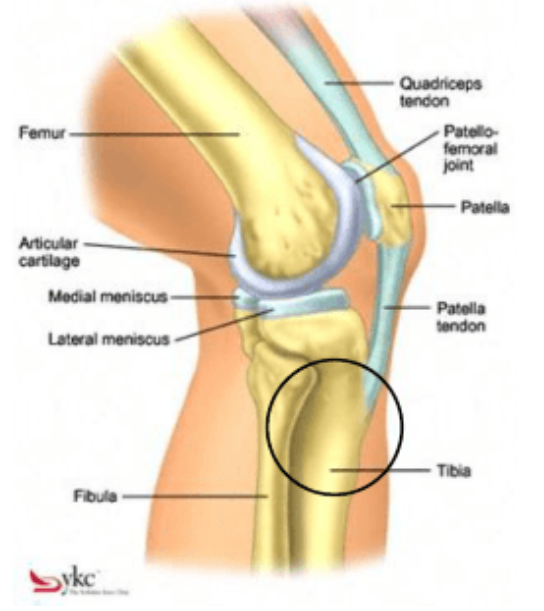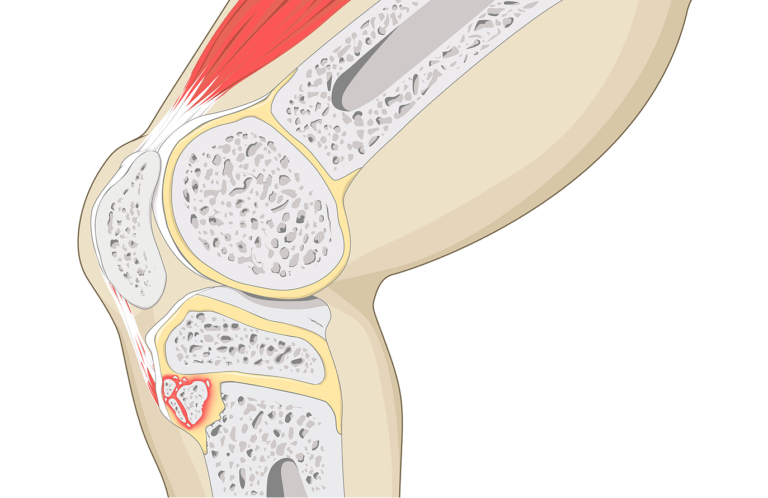Although this is called a ‘disease’ it is not meant in the classical sense i.e. you cannot ‘catch’ Osgood Schlatter’s.
It presents as a form of knee pain found in growing children. The pain is usually found just below the Kneecap (Patella) over a bump of bone at the top and front of the shin bone (Tibia). The bump is called a Tubercle and is the attachment point of the tendon from the Quadriceps muscles (front thigh muscles), which, stretches over the top of the kneecap to reach the ‘bump’ attachment. His tendon also plays an important role in ensuring the kneecap moves and positions in the correct manner. We call this Patella tracking.

This condition most often occurs during growth spurts when bones, muscles, tendons, and other structures are developing. It can be more easily accelerated and aggravated in youngsters who are in a concentrated growth spurt and frequently carry out a lot of sports activities. However, less active adolescents may also experience this problem. Repetitive traction on the tubercle and inflammation of the growth plate may weaken the growth plate and this can, in some extreme cases, lead to the growth plate separating altogether. As the growth plate tries to heal, extra bone will form. This may be noticed as a bump at the front of the knee and may be seen on X-Rays.
TREATMENT
Once the patient stops growing, around the age of 14-16 for girls and 16-18 for boys, this problem almost always gets better. The problem, however, is how long this may take for those that are sport active, sometimes up to 18 months.
In the meantime, full rest, icing, stretching, specific shockwave therapy, and specific professional support in providing strengthening techniques of the knee are all appropriate options to ease the knee pain. Some patients will get some relief with simple knee sleeves or patellar tendon straps. You should be assessed by a qualified Physiotherapist or Orthopaedic surgeon if the pain does get worse or you have a limp with walking.

PROGNOSIS / EXPECTATIONS
The knee pain almost always stops once the patient is done growing, but the bump on the knee may be permanent. Removal of the bump of bone (ossicle) is rarely necessary. On rare occasions, the pain and inflammation worsen, and the growth plate can give way. A severe fracture can occur which may require surgery to repair.
